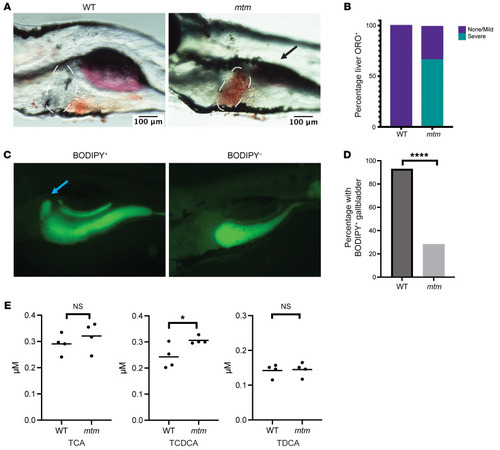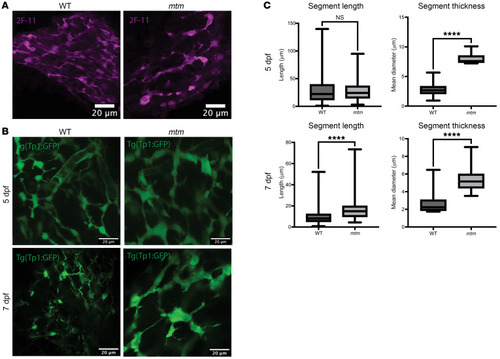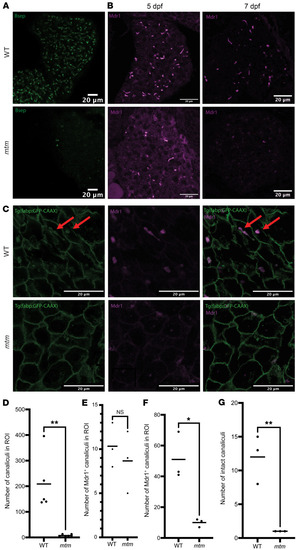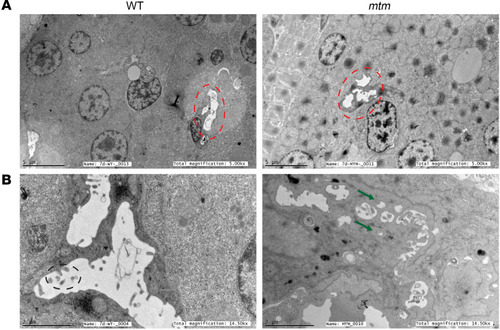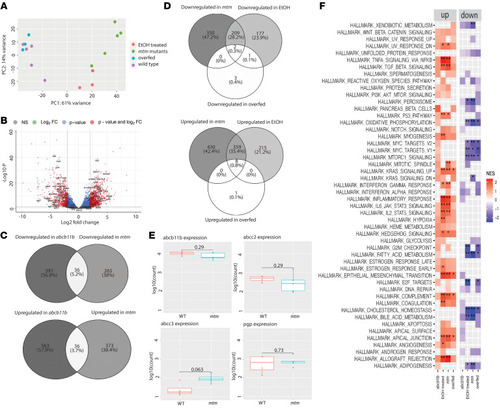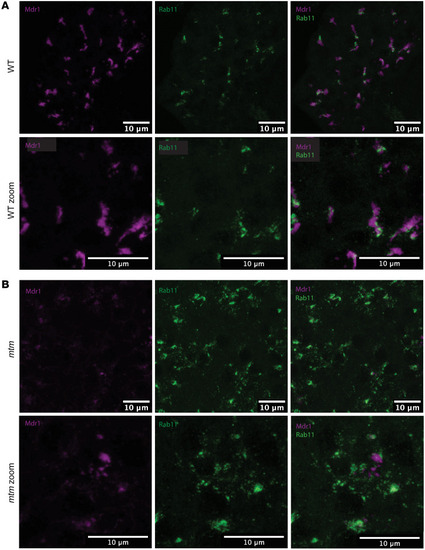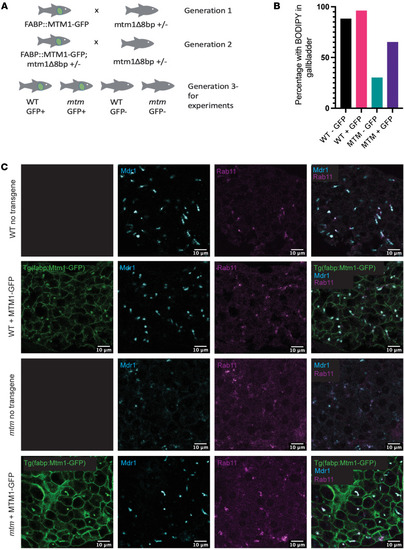- Title
-
Loss of Mtm1 causes cholestatic liver disease in a model of X-linked myotubular myopathy
- Authors
- Karolczak, S., Deshwar, A.R., Aristegui, E., Kamath, B.M., Lawlor, M.W., Andreoletti, G., Volpatti, J.R., Ellis, J.L., Yin, C., Dowling, J.J.
- Source
- Full text @ Journal of Clin. Invest.
|
( PHENOTYPE:
|
|
( |
|
Bile acid transport protein expression is altered in liver from ( |
|
Canalicular ultrastructure is disrupted in Electron microscopy of whole 7 dpf zebrafish was used to define liver ultrastructure. ( |
|
Livers from Comparative RNA-Seq from isolated livers from 7 dpf larvae from the following conditions: WT, |
|
Altered recycling endosomal trafficking in Confocal images of 7 dpf zebrafish sections immunostained for Mdr1 (purple) and Rab11 (green), shown at lower and higher magnification. Mdr1 is a canalicular transporter, and Rab11 is a GTPase found on recycling endosomes. ( |
|
Liver-specific Mtm1 expression rescues the cholestatic phenotype of The |
|
DNM2 inhibition rescues the A targeted panel of chemicals was tested in PHENOTYPE:
|

